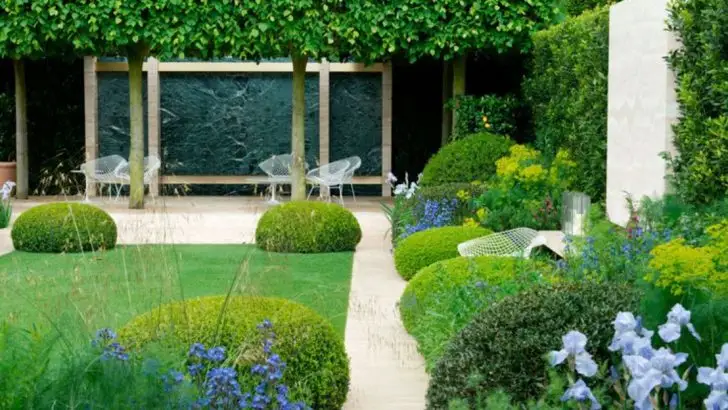Just like fashion, garden design trends evolve—and what once looked charming and cutting-edge might now feel tired or high-maintenance. If your outdoor space is stuck in a rut, it might be time to let go of some outdated gardening ideas and embrace fresh, modern alternatives that are more sustainable, stylish, and functional.
From ditching perfectly manicured lawns in favor of wildlife-friendly meadows, to swapping plastic décor for natural materials, today’s trends focus on eco-conscious living, climate resilience, and personal expression.
Discover 7 garden trends that no longer serve you, and explore 7 exciting new ones that will breathe life into your garden and make it a space you love spending time in—all while staying on trend and in tune with nature.
Artificial Turf
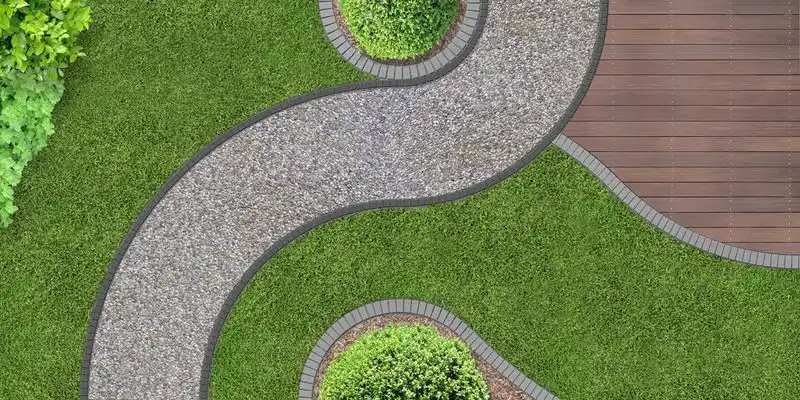
Once hailed as a low-maintenance marvel, artificial turf now feels lifeless underfoot. Its uniform green, while visually appealing, lacks the seasonal charm that comes with natural grass. Besides, the environmental impact of synthetic lawns is a growing concern. They contribute nothing to the soil’s health and can become heat traps during the summer months.
Consider the joy of walking barefoot on real grass, feeling the earth’s texture and natural coolness. Opt for native grasses that support local biodiversity. The vibrant, ever-changing hues of natural lawns offer a sensory experience that synthetic versions simply can’t match.
Monochrome Gardens
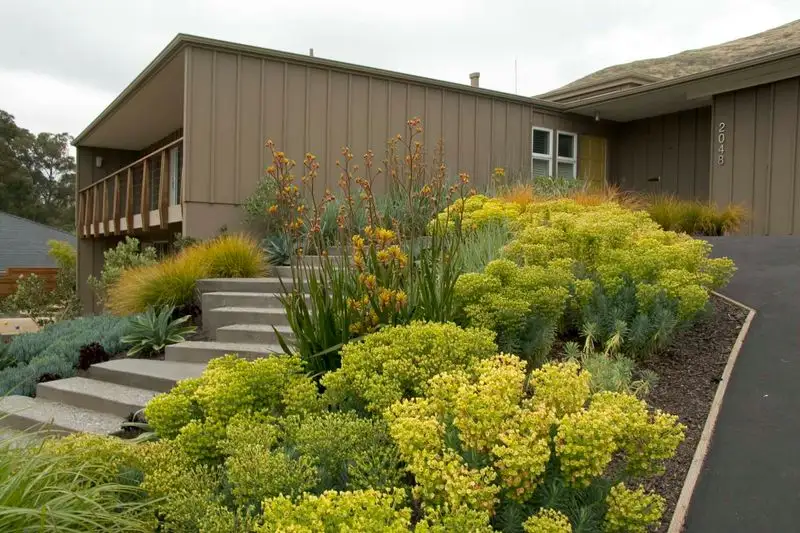
A garden of only one color may seem elegant, but it misses the vibrancy that diversity brings. Monochrome gardens can feel stark and uninviting, lacking the dynamic interplay of contrasting hues. They often fail to capture the imagination or support a variety of wildlife.
Instead, envision a kaleidoscope of colors that dance across your garden. Mix various plants to create a lively, harmonious palette that changes with the seasons. A diverse garden is both a feast for the eyes and a haven for pollinators, inviting a symphony of sounds and scents year-round.
Uniform Edging
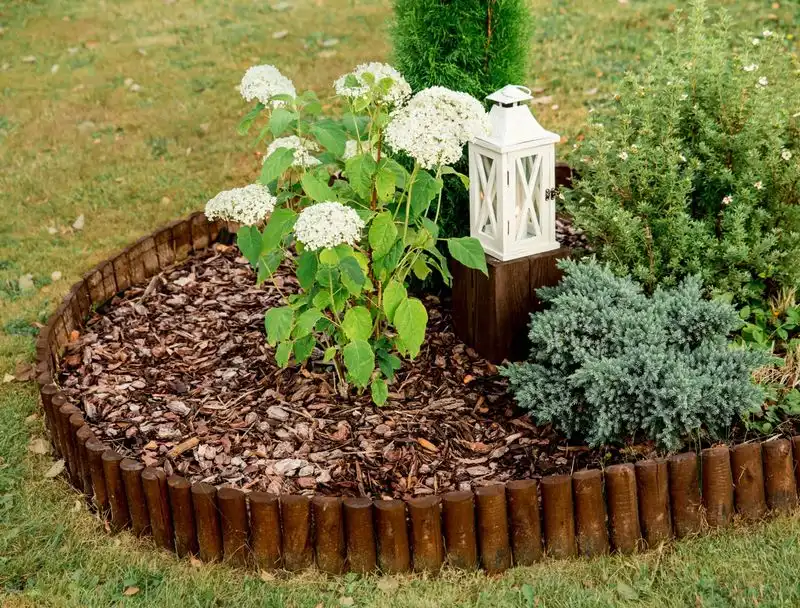
Perfectly uniform edges might give a garden a tidy appearance, but they also impose an unnatural order on nature’s whimsy. This rigid approach can make a garden feel more like a display than a living space.
Why not embrace organic shapes that allow plants to spill over edges and soften the lines? Curved borders bring a sense of flow and spontaneity, inviting exploration and creativity. Such a design not only reflects the garden’s natural rhythms but also encourages diverse plant growth, resulting in a more sustainable, engaging landscape.
Ornamental Gravel Paths
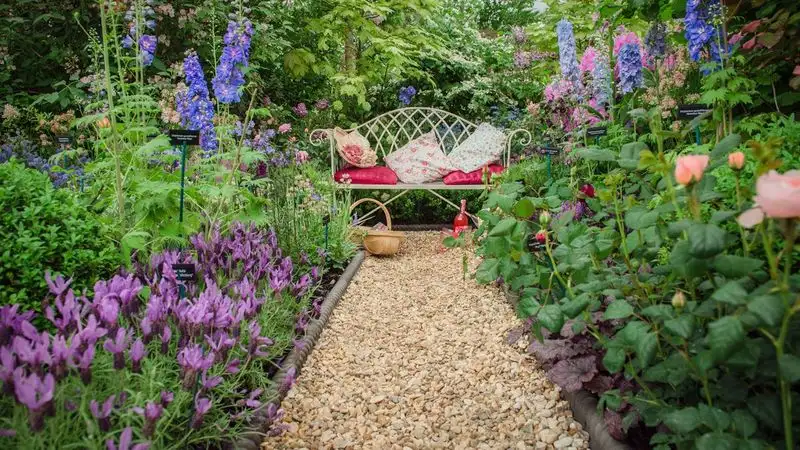
Gravel paths have long been used to create defined walkways, yet they often prioritize form over function. They can be harsh underfoot and may require more maintenance than expected, with weeds and dirt accumulating over time. Additionally, their sterile aesthetic can detract from the natural beauty of surrounding plants.
Imagine a path that invites you to wander barefoot, like stepping stones surrounded by lush ground cover. Mixing textures and materials in your garden paths can enhance the sensory experience while complementing the natural environment, inviting both visual interest and practical exploration.
Topiary Sculptures
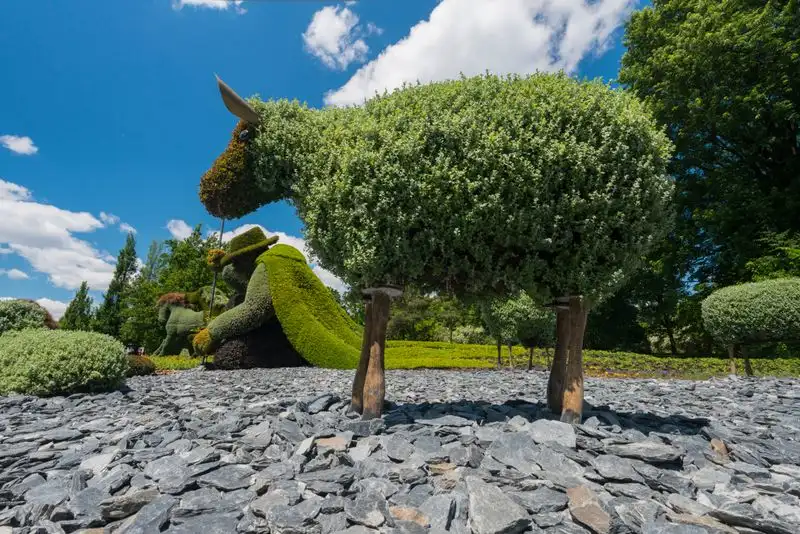
Topiary, the art of shaping plants into decorative forms, can create striking visuals, yet it often demands high maintenance. The constant trimming required to maintain these living sculptures can become a chore rather than a joy. Moreover, such strict control over plant growth can hinder natural processes.
Instead, allow shrubs and trees to flourish in their own forms, celebrating their natural beauty. A more relaxed approach encourages healthier plant life and provides habitats for local wildlife. By letting your garden grow with a touch of wilderness, you’ll find a balance between artistry and nature.
Formal Boxwood Hedges
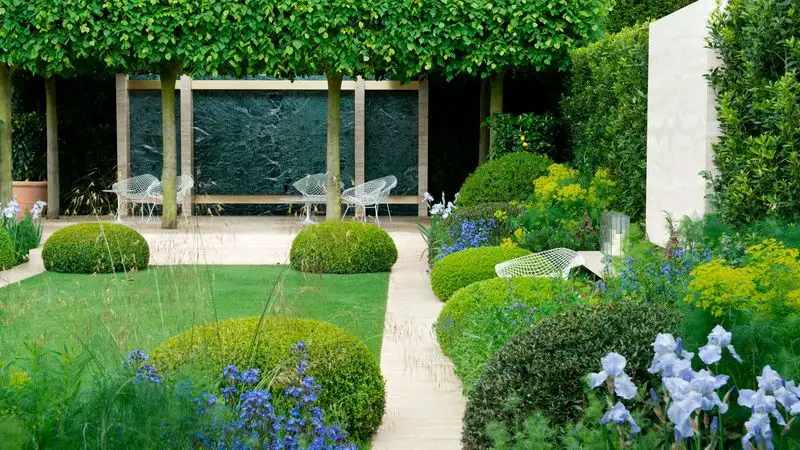
Boxwood hedges, with their precise lines and symmetrical shapes, have long been a staple of formal gardens. However, their popularity is waning due to the intensive care they require and their susceptibility to pests and diseases.
Think of a garden where boundaries blur into the landscape, using a mix of native shrubs that provide year-round interest. Replacing boxwoods with a variety of textures and colors can create a more inviting space that thrives with minimal intervention. This approach not only saves time and resources but also fosters a garden that feels alive and dynamic.
Annual Bedding Plants
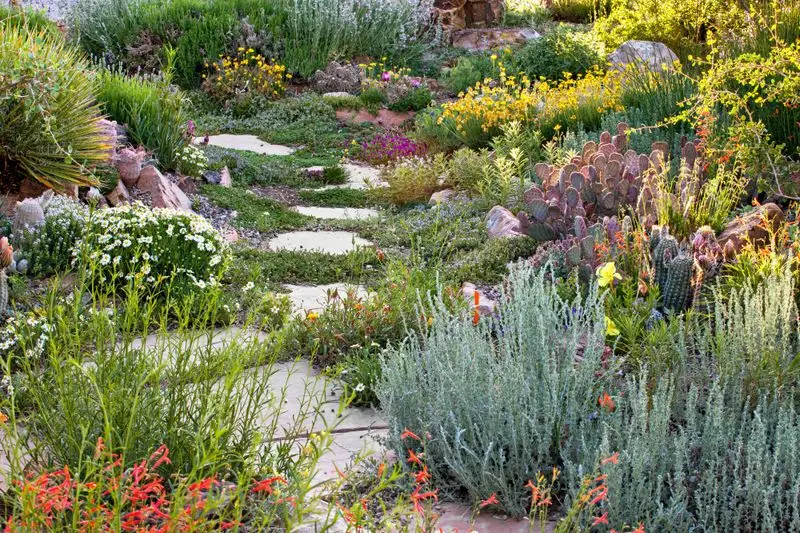
Annual bedding plants offer a quick splash of color, but their fleeting beauty often comes at a high cost. The constant replanting required for these seasonal displays can be labor-intensive and environmentally taxing. They also tend to support less biodiversity than perennials.
Consider a garden that evolves with time, filled with perennials that return year after year. These plants require less maintenance and provide lasting beauty, supporting a more robust ecosystem. By choosing perennials, your garden will not only flourish sustainably but also offer a rich tapestry of colors and textures that endure.
Native Planting
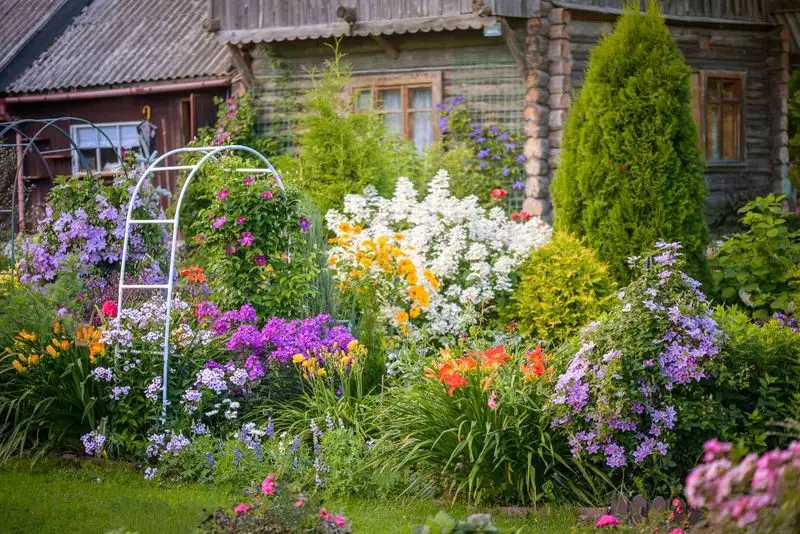
Embracing native plants in your garden is like inviting nature to feel at home. These plants are perfectly adapted to local conditions, often requiring less water and care than exotic species. With native plants, your garden becomes a sanctuary for local wildlife, supporting pollinators and providing food and shelter for birds and insects.
Picture a garden alive with movement and sound, where each plant plays a role in the larger ecosystem. Native gardens offer a sense of place, connecting your outdoor space to the surrounding environment. They thrive with minimal intervention, creating a sustainable and enriching landscape.
Edible Landscaping

Imagine a garden that not only pleases the eye but also fills your plate. Edible landscaping combines beauty and utility, transforming your garden into a source of nourishment. By integrating herbs, fruits, and vegetables into your landscape, you reduce your reliance on store-bought produce and create a sustainable, self-sufficient space.
Think of the satisfaction of picking fresh basil or berries right from your backyard. Edible gardens offer a sensory feast, blending colors, textures, and aromas with the joy of harvesting your own food. It’s an approach that nurtures both body and soul, fostering a deeper connection with your environment.
Vertical Gardening
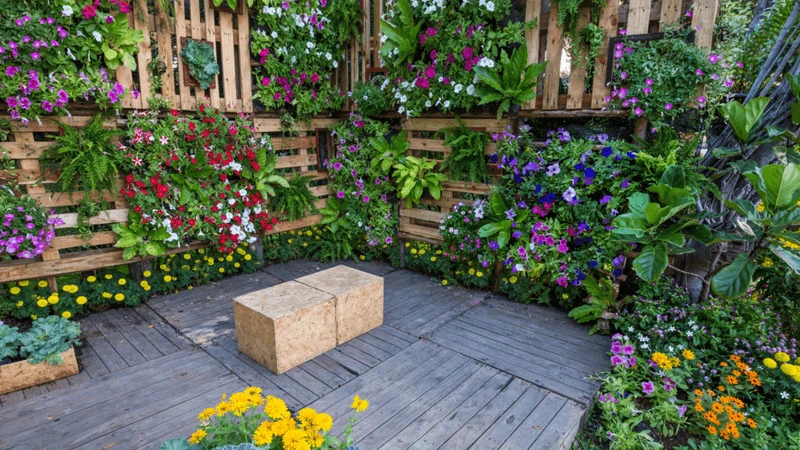
In limited spaces, vertical gardening opens up new possibilities. By growing upward, you make the most of every square inch, perfect for urban environments or small yards. Vertical gardens can host diverse plants, from flowers to vegetables, adding layers of beauty and function to your space.
Consider the visual delight of a wall covered in cascading greenery, offering shade and privacy while purifying the air. Such gardens are not only space-efficient but also create striking focal points. They invite creativity and innovation, transforming even the smallest area into a thriving garden haven.
Wildlife Habitats
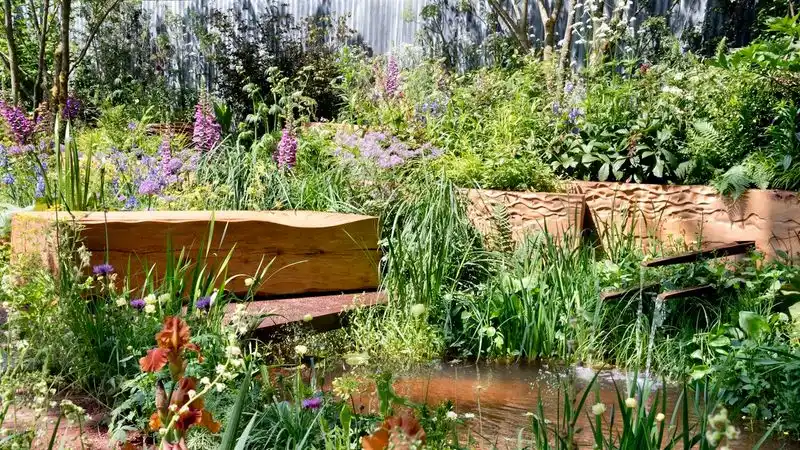
Gardens can be more than visual treats; they can be havens for wildlife. By creating habitats for birds, bees, and butterflies, you contribute to biodiversity and enjoy the lively presence of these creatures. Simple additions like bird feeders, ponds, and native plants can transform any garden into a vibrant ecosystem.
Imagine the joy of watching birds bathe or butterflies dance among the flowers. Such interactions bring a garden to life, offering endless opportunities for observation and connection with nature. This approach enriches both the environment and the gardener’s experience, fostering a deeper appreciation for the natural world.
Rain Gardens
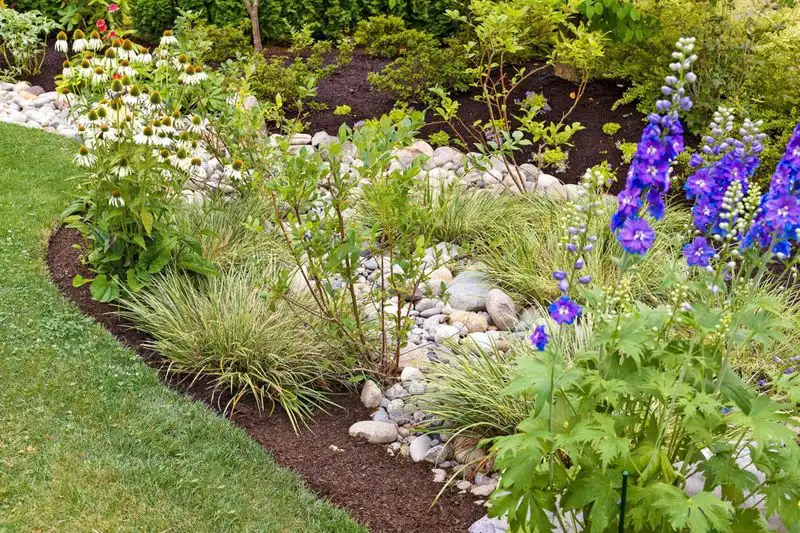
Rain gardens capture runoff, reducing erosion and pollution while providing a lush focal point. Featuring water-tolerant plants and strategic design, they manage stormwater naturally, benefiting the surrounding environment.
Picture a garden that thrives on what others might consider waste, turning rain into a resource. This sustainable approach creates a dynamic landscape, where beauty meets function. Rain gardens not only enhance visual appeal but also support local ecosystems, making them an exemplary model of environmental stewardship. They invite a mindful interaction with nature’s cycles, offering both practical and aesthetic rewards.
Sustainable Water Features
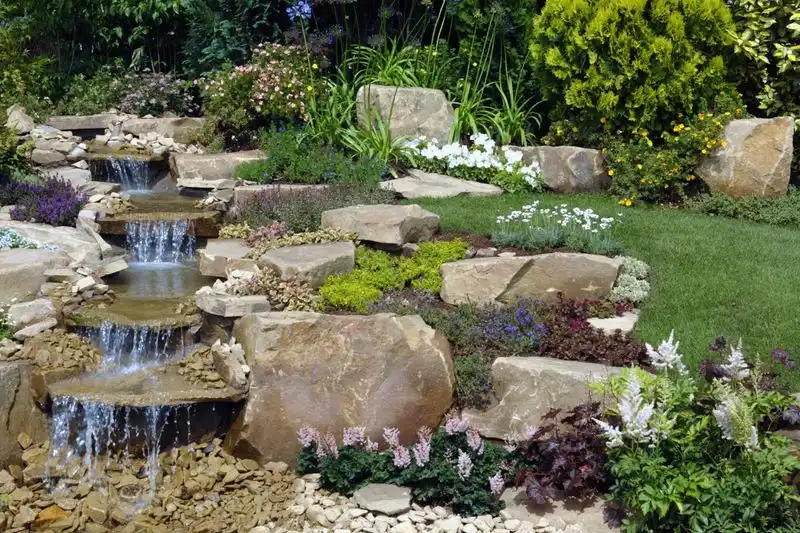
Water features add tranquility to any garden, but traditional designs can be resource-intensive. Embracing sustainable options like solar-powered fountains or natural ponds changes the game. These features conserve water while providing habitat for aquatic life and attracting birds and insects.
Imagine the gentle sound of water powered by the sun, creating a peaceful oasis without draining resources. Such features blend seamlessly with the environment, enhancing your garden’s aesthetic and ecological value. By choosing sustainable water features, you create a harmonious balance between beauty and responsibility, enriching your outdoor space while respecting nature.
Pollinator-Friendly Planting
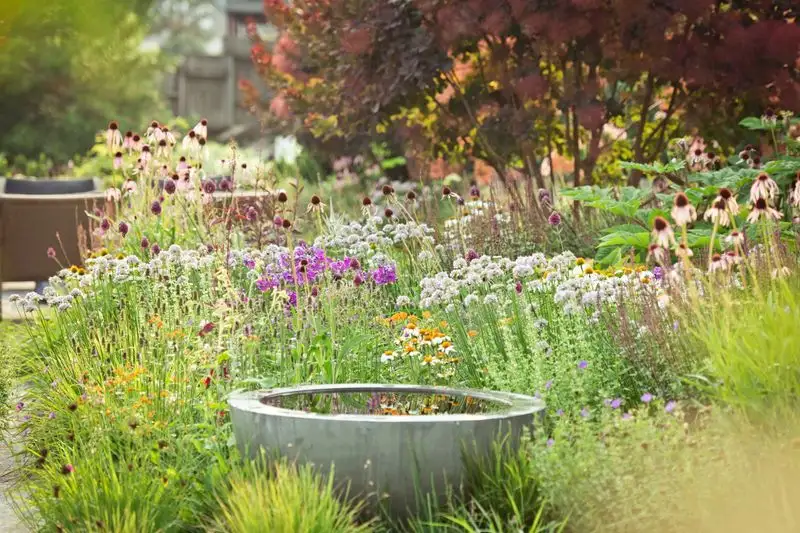
With pollinator-friendly planting, every flower becomes a beacon for bees, butterflies, and other essential creatures. This approach ensures your garden contributes to vital ecological processes while offering a riot of colors and scents.
Think of a garden buzzing with life, where each plant plays a role in supporting the local ecosystem. By choosing plants that attract pollinators, you foster biodiversity and enjoy the benefits of a thriving garden. This method not only enhances visual appeal but also nurtures a vital connection with nature, making your garden a cornerstone for environmental well-being.

